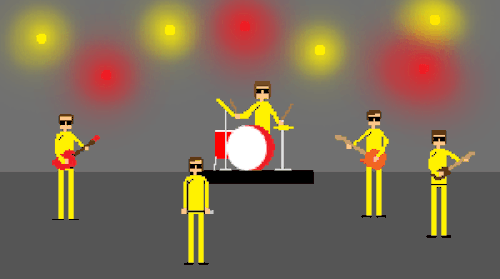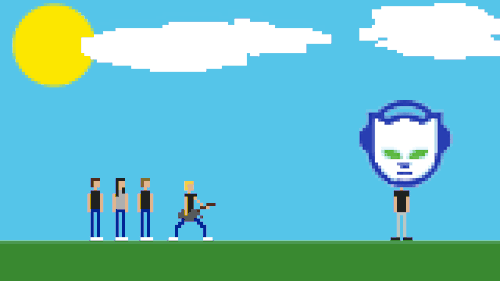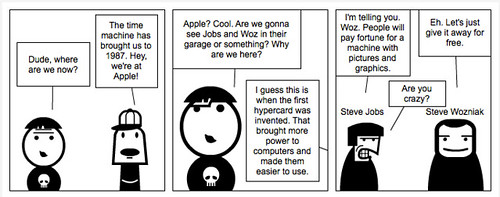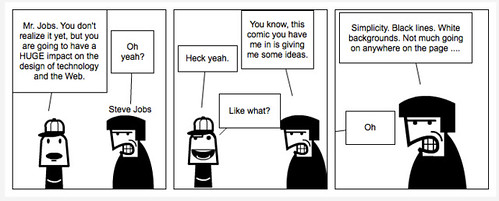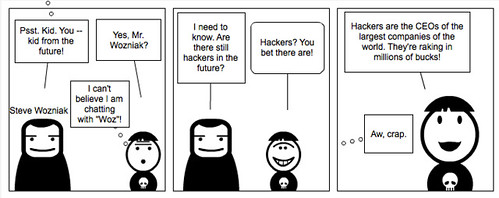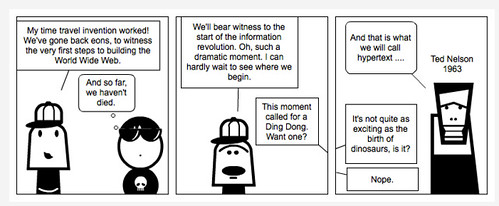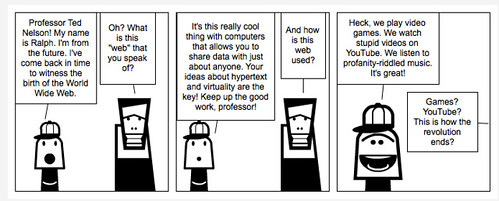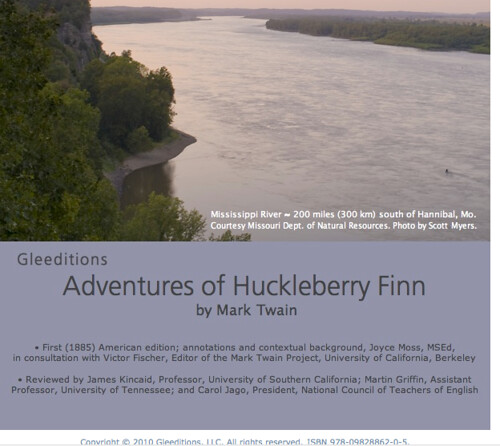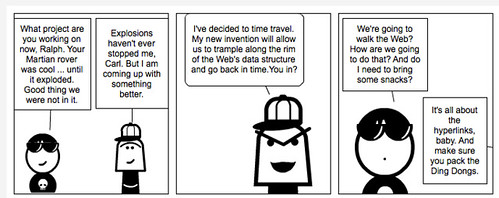
Loaded with references to Star Trek and Star Wars and plenty of comics that have come before it, Tune by Derek Kirk Kim is a fun graphic read in which the main character — Andy Go — is at a dead end with his life dream of becoming an illustrator and gets talked into becoming an exhibit at a zoo in a parallel universe. Talk about job opportunity! Much of this first book centers on the character of Andy, who loves a girl who may or may not like him back, battles his parents who demand that he get a job or move out of their house, and is a bit frustrated with his own vision of art.
Derek Kirk Kim has created an interesting character in Andy Go, and the interdimensional creatures that come to recruit Andy for his zoo at the end of the book have a lot of slapstick possibilities. This graphic novel nicely mixes science fiction and comedy, and while never taking itself too seriously, the story does have a solid emotional center around Andy and his own insecurities about life and the dead ends that seem ahead of him.
And Kim keeps the story going at his online site — Tune — where you can also read the entire first book (which I am reviewing) as well as the second book that he published online. How cool is that? Pretty darn cool. This book would be fine for high school students (some profanity), but not so much for middle and elementary students.
Peace (in the other dimension),
Kevin

